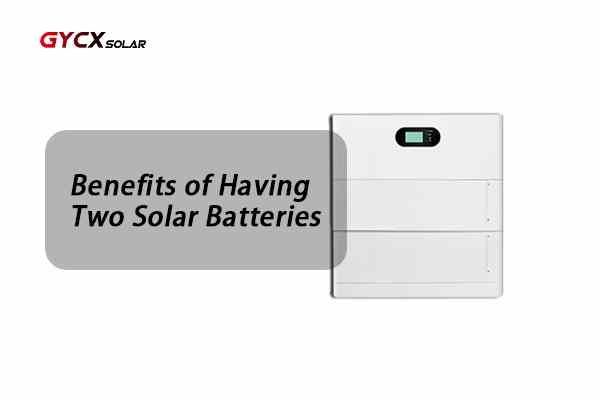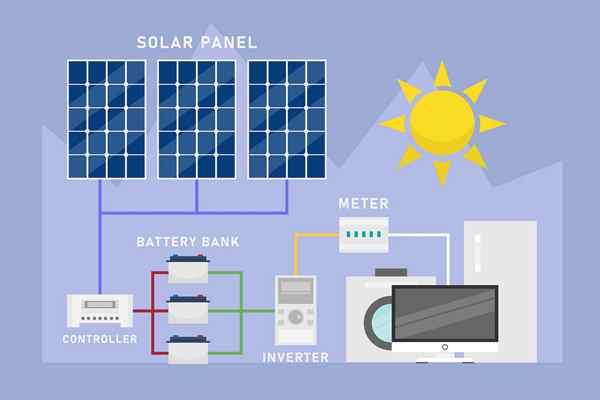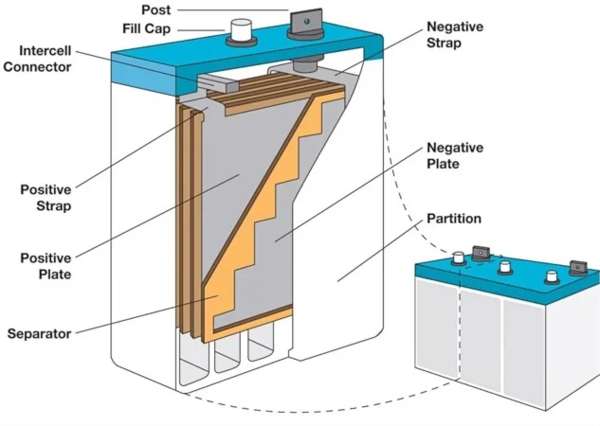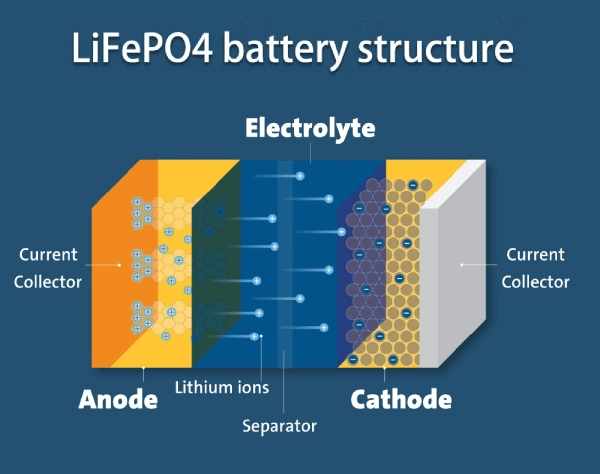Voivatko aurinkoakkut pinota?
Kun tutkit energian varastoinnin lisäämistä aurinkopaneelijärjestelmään, käytännöllinen kysymys nousee nopeasti: "Mihin se kaikki sopii?" Tämä johtaa monet ihmettelemään, "Voivatko aurinkoakkut pinota tilaa säästämään?" Se on hieno kysymys, Ja vastaus on keskeinen moderni, Joustava energian varastointi.
Joo, Monet nykyaikaiset aurinkoakkut on erityisesti suunniteltu "pinottuiksi." Tämä tarkoittaa, skaalautuva energian varastointijärjestelmä. Tämä lähestymistapa, Erityisen yleinen turvallisen ja pitkäaikaisen LFP: n kanssa (Litiumrautafosfaatti) paristot, on avain tehokkaan, mutta kompaktin järjestelmän rakentamiseen. kuitenkin, Tämä on tehtävä vain akkuilla, jotka on erityisesti suunniteltu tähän tarkoitukseen.

klo Gycx aurinko, Olemme erikoistuneet näihin moderneihin, pinottava aurinkoakku ratkaisut. Niiden modulaarisuus antaa meille mahdollisuuden suunnitella järjestelmä. Tutkitaan joitain yleisimpiä kysymyksiä aurinkoakkupankin rakentamisesta.
Onko kaksi aurinkoakkua?
Sinulla on aurinkoakkujärjestelmä, tai suunnittelet yhtä, Ja mietit, onko askel askel yhdestä paristosta kahteen, on kannattava sijoitus. Monille asunnonomistajille, jotka etsivät parannettua energiaturvaa ja suurempia säästöjä, Vastaus on selvä kyllä.
Jolla on kaksi (tai enemmän) aurinkoakkut ovat ehdottomasti sen arvoisia, jos tavoitteesi saavutetaan pidempi varmuuskopiointi Ruudukkokatkojen aikana, Maksimoi aurinkoenergian käyttö tallentamalla enemmän voimaa yökäyttöön, ja hyötyä Suurempi energian riippumattomuus. Varastointikapasiteetin kaksinkertaistaminen tarkoittaa usein kestävyyden kaksinkertaistamista ja kykyäsi luottaa omaan puhtaan energian kanssa ympäri vuorokauden.

Sukeltaa syvemmälle: Lisääntyneen kapasiteetin arvo
Havaitakaamme konkreettiset edut toisen akun lisäämisestä aurinkojärjestelmään:
- Laajennettu varmuuskopiointia: Tämä on ilmeisin hyöty. Jos yksi 10 kWh akku voi käyttää välttämättömiä laitteitasi 12 tunteja sähkökatkon aikana, Toinen 10 kWh akku laajentaa tämän suojaa 24 tuntia. Tilanteissa, joissa on arvaamaton tai monipäiväinen ruudukon vika, Tämä lisätty ajonaika tarjoaa arvokkaan mielen ja mukavuuden rauhan.
- Lisääntynyt aurinko-itse kulutus: Suurempi aurinkopaneeli voi usein tuottaa enemmän ylimääräistä virtaa päivän aikana kuin yksi akku voi varastoida. Toinen akku antaa sinun kaapata enemmän ilmaista aurinkoenergiaa, joka muuten viedään verkkoon (usein alhaisella luottolla). Voit sitten käyttää tätä tallennettua energiaa illalla, vähentämällä huomattavasti riippuvuutta kalliiden ruudukon sähkön ostamiseen. Kalliissa sähkömarkkinoissa, kuten Singapore, Tämä voi johtaa merkittäviin laskujen säästöihin.
- Suurempien kuormien käsittely: Suurempi akkupankki voi tyypillisesti tuottaa enemmän virtaa (korkeampi KW -lähtö). Tämä tarkoittaa, että seisokin aikana, Saatat pystyä ajamaan vaativampia laitteita samanaikaisesti, kuten ilmastointilaite kuumassa ilmastossa, Essentialioidesi lisäksi.
- Optimointi suuremmalle aurinkoaryhmälle: Jos sinulla on suuri katto ja 10 kW tai suurempi aurinkokunta, Yksi akku voi olla pullonkaula. Toisen akun lisääminen varmistaa, Koko järjestelmästäsi tehokkaampi ja tehokkaampi.
Gycx Solar Story: "Meillä oli asiakas, jolla oli 10 kW: n aurinkokunta ja yksi 10kWh akku. He havaitsivat, että he vientivät edelleen paljon aurinkoenergiaa päivän aikana ja vetävät ruudukosta sen jälkeen 3 A.M. Autimme heitä lisäämään toisen 10 kWh pinottavan akkumoduulin. Nyt, He ovat melkein täysin omavaraisia, Käytetään vain ruudukkoa viimeisenä keinona."
Kuinka monta akkua sinulla voi olla aurinkopaneeleilla?
Ajatus lisää paristoja on jännittävä, Mutta onko olemassa raja? Voitko vain lisätä paristoja aurinkojärjestelmään määräämättömäksi ajaksi? Vaikka nykyaikaiset modulaariset järjestelmät ovat uskomattoman skaalautuvia, On joitain käytännöllisiä rajoja, jotka on otettava huomioon.
Akkujen lukumäärä voi olla teoreettisesti rajoittamaton, mutta käytännössä, Sitä rajoittaa kolme avaintekijää: 1) Aurinkopanjasi kyky ladata heitä, 2) aurinkohybridi -invertterin teho- ja kapasiteettirajat, ja 3) käytettävissä oleva fyysinen tila ja budjetti. Moderni pinottava aurinkoakku Järjestelmät mahdollistavat monien moduulien helpon rinnakkaisyhteyden, Mutta koko järjestelmän on oltava tasapainossa.

Sukeltaa syvemmälle: Kolme järjestelmän koon pylvästä
Hyvin suunniteltu aurinko + Varastointijärjestelmä on tasapainoinen ekosysteemi. Tässä rajoittaa paristojen määrää:
- Aurinkopaneelikyky: Aurinkopaneelisi ovat moottori, joka lataa paristot. Ei ole mitään syytä olla massiivinen 40 kWh -akkupankki, jos aurinkoaryhmäsi voi tuottaa vain 15 kWh ylimääräistä energiaa hyvällä aurinkoisella päivällä. Nyrkkisääntö on saada tarpeeksi aurinkoenergiaa koko akkupankin lataamiseksi mukavasti päivittäin, Päiväkuormiesi virran lisäksi.
- Invertteri & Latausohjaimen rajat: Hybridi -invertteri on järjestelmän aivot, Ja sillä on rajansa.
- Max Akku kapasiteetti: Useimmissa inverttereissä on enimmäismäärä akkuja, joita ne on suunniteltu hallitsemaan tehokkaasti.
- Enimmäisvaraus/vastuuvapausvirta: Inverterillä on enimmäisvirta (ampeereina) että sen voi käyttää paristojen lataamiseen tai purkamiseen. Valtava akkupankki ei ehkä pysty lataamaan nopeammin, jos invertteri on jo maksimoitu.
- Fyysinen tila ja budjetti: Tämä on usein käytännöllisin rajoitus. Jokainen akkumoduuli vie tilaa ja sillä on kustannukset. Singaporen kaltaisessa avaruustehokkaassa kaupungissa, Huoneen löytäminen erittäin suurelle akkupankille voi olla haaste. Tässä on korkea energiatiheys pinottavat aurinkoakkut Kompaktiin telineeseen tai kaappiin asennettuna tulee valtava etu. Voit sovittaa enemmän säilytystilaa pienempään jalanjälkeen.
Gycx Solarissa, Suunnitteluprosessimme alkaa energiantarpeiden perusteellisella analyysillä. Suunnittelemme sitten tasapainoisen järjestelmän, jossa aurinkopaneeli, invertteri, ja akkupankki on kaikki mitoitettu harmoniassa optimaalisen suorituskyvyn ja arvon tarjoamiseksi, Varmista, ettet ole liian sijoittaminen akkukapasiteettiin, järjestelmäsi ei voi tukea.
Kuinka laittaa pinotut akut?
Olet valinnut modulaarisen, pinottava akkujärjestelmä. Mitä asennusprosessi todella liittyy? Kuinka "laitat" nämä akut turvallisen varmistamiseksi, turvata, ja operatiivinen asennus?
Pinottujen paristojen asentaminen on ammattimainen työ, joka sisältää kaksi avainvaihetta: 1) Mekaaninen asennus, Jos suunnitellut moduulit sijoitetaan turvallisesti nimetyyn telineeseen tai koteloon, varmistaa, että ne ovat vakaita ja niillä on oikea ilmavirta. 2) Sähköyhteys, missä moduulit on kytketty tarkasti toisiinsa (yleensä rinnakkain aurinkoenergian varastointia varten) Ja sitten järjestelmän invertteriin käyttämällä oikeita kaapeleita, liittimet, ja vääntömomentin asetukset.

Sukeltaa syvemmälle: Ammattimainen asennusprosessi
Turvallinen ja tehokas asennus on metodinen prosessi, jonka tulisi hoitaa pätevä teknikko:
- Askel 1: Sivuston valmistelu: Valittu sijainti (ESIM., kodinhoitohuone, autotalli) On oltava puhdas, kuiva, ja hyvin ilmastoitu. Laiteteline tai kaappi on koottu ja ankkuroitu tiukasti lattiaan tai seinään kaatamisen estämiseksi, joka on ratkaiseva turvavaihe näille raskaille komponenteille.
- Askel 2: Mekaaninen kiinnitys: Alhaalta ylöspäin stabiilisuuden vuoksi, Jokainen akkumoduuli nostetaan varovasti ja liu'itaan sen määritettyyn hyllylle tai telineen kiskoihin. Moduulien välinen oikea etäisyys ylläpidetään valmistajan eritelmien mukaisesti välttämättömän ilmavirran ja jäähdytyksen mahdollistamiseksi, mikä on elintärkeää akun kestolle, etenkin lämpimässä ilmastossa.
- Askel 3: Sähköyhteys: Koko järjestelmä on valettu, Sähkötyö alkaa.
- Moduulin välinen yhteys: Akkumoduulit on kytketty toisiinsa. Kapasiteetin lisäämiseksi 48 V: n järjestelmässä, tämä on a rinnakkaisyhteys (Positiiviset päätelaitteet positiiviseen verkosta, Negatiiviset napat negatiiviset verkosta).
- Pankki-invertterin yhteys: Täytetyn akkupankin tärkeimmät positiiviset ja negatiiviset liittimet on sitten kytketty vastaaviin hybridi-invertterin DC-tuloihin raskaan mittarin avulla, asianmukaisesti arvioidut kaapelit.
- Viestinnän linkki: Datakaapeli (kuten Bus tai Rs485) on kytketty akkupankin BMS: stä invertteriin. Tämä "suljettu silmukka" Viestintä on elintärkeää, Koska se antaa akun ja invertterin puhua toistensa kanssa optimaalisen suorituskyvyn ja turvallisuuden saavuttamiseksi.
- Askel 4: Käyttöönotto: Kun kaikki on turvallisesti kytketty ja tarkistettu, Järjestelmä on virtalähde tietyssä järjestyksessä (Yleensä paristot ensin, Sitten invertteri). Asennusohjelma määrittää sitten invertterin asetukset vastaamaan akun erityisiä parametreja (kemia, kapasiteettia, lataus-/vastuuvapausrajat) Täydellinen toiminta.
Tämä huolellinen prosessi, jota sertifioidut GYCX -aurinkoteknikot seuraavat jokaista asennusta varten, takaa sinun pinottava aurinkoakku Järjestelmä on turvallinen, luotettava, ja esiintyy parhaimmillaan.
Voivatko LIFEPO4 -paristot pinota?
Keskustellessasi aurinkoakkujen parhaasta tekniikasta, Kuulet usein LifePo4: stä, tai LFP. Onko tämä erityinen, turvallinen, ja pitkäkestoinen litiumkemia, joka sopii modulaariseen, Pinotut kokoonpanot, joista olemme keskustelleet?
Joo, täysin. LiFePO4 (LFP) on ihanteellinen ja yleisin kemia, jota käytetään nykyaikaisissa pinottavissa aurinkoakkujärjestelmissä. Luontainen turvallisuus, poikkeuksellinen lämpövakaus, ja LFP -tekniikan erittäin pitkä sykliikä tekee siitä täydellisen valinnan tiheän luomiseen, luotettava, ja skaalautuvat energian varastointipankit, joissa useita akkumoduuleja on asennettu läheisyyteen.

Sukeltaa syvemmälle: Miksi LFP on täydellinen pinoamiseen
Tästä syystä LFP: stä on tullut korkealaatuisen tekniikka pinottavat aurinkoakkut:
- Vertaansa vailla oleva turvallisuus: LFP on kemiallisesti stabiilempi kuin muut yleiset litium-ioni-kemiat, kuten NMC (Nikkelimanganoboltti). Sillä on paljon korkeampi lämmön karkaava kynnysarvo, tarkoittaen, että se on paljon vähemmän todennäköisesti ylikuumennut ja syttyy, jos se on vaurioitunut tai stressaantunut. Tämä on tärkein näkökohta suunnitellessasi akkujärjestelmää kodille tai yritykselle.
- Poikkeuksellinen pitkäikäisyys: LFP1. paristot ovat työhevoset, rakennettu sellaisiin päivittäisiin varaus- ja purkausjaksoihin, joita aurinkoenergiajärjestelmä vaatii. Ne toimittavat jatkuvasti tuhansia syklejä (3,000 to 6,000+, Joskus enemmän), kääntämällä palveluelämää 10-20 vuotta. Tämä tekee heistä kestävän, pitkäaikainen omaisuus.
- Lämmönvakaus: LFP: tä vaikuttaa vähemmän kuin muut kemiat, mikä on merkittävä etu lämpimässä ilmastossa. Tämä kestävyys yksinkertaistaa tiheästi pakattuun akkupinoon tarvittavaa lämpöhallintaa.
- Integroitu BMS: Hyvämaineiset LFP -akkumoduulit on aina pariksi edistyneen akun hallintajärjestelmän kanssa (BMS). Tämä rakeinen hallinta- ja suojaustaso kussakin moduulissa on välttämätöntä suuren hallinnassa, monimoduulin pino turvallisesti ja tehokkaasti.
- Kobolttivapaa kemia: LFP -akut eivät sisällä kobolttia, Mineraali, joka liittyy toimitusketjun merkittäviin hintojen volatiliteettiin ja eettisiin huolenaiheisiin. Tämä tekee LFP: stä vakaamman ja tunnollisemman valinnan kestävän energian tulevaisuudelle.
Gycx Solar Story: "Sitoumuksemme asiakkaidemme turvallisuuteen ja pitkäaikaiseen arvoon on syy siihen, miksi rakennamme GYCX-aurinkoenergian varastointiratkaisuja LFP-tekniikan ympärille. Kun asennamme pinottavan akkujärjestelmän, Asiakkaamme tietävät, että he saavat turvallisimman, Kestävin kemia markkinoilla."
Niin, Voivatko aurinkoakkut pinota? Joo, Kun valitset modernin, Tätä tarkoitusta varten suunniteltuja modulaarisia järjestelmiä, avaat skaalautuvan maailman, Avarahatergian varastointi. Kahden tai useamman pariston saaminen on usein erittäin arvokas sijoitus suurempaan kestävyyteen ja säästöihin, Ja aurinkoaryhmäsi ja järjestelmän komponentit tasapainottavat lisäämäsi numeron. LFP -kemia erottuu ihanteelliseksi tekniikaksi näille tehokkaille järjestelmille.
Jos olet kiinnostunut oppimaan lisää meistä pinottava aurinkoakku Tuotteet ja kuinka modulaarinen järjestelmä voidaan räätälöidä tarkkaan energiantarpeeseen, Gycx Solarin asiantuntijatiimimme on täällä auttamassa. Ota yhteyttä ammatilliseen kuulemiseen tänään!
LFP: n käsitteen ymmärtäminen auttaa sinua paremmin vertaamaan ja ymmärtämään akkuun liittyviä tietokonsepteja. Tämä auttaa sinua valitsemaan tuotteen, joka sopii parhaiten tarpeisiisi yrityksestämme. ↩
